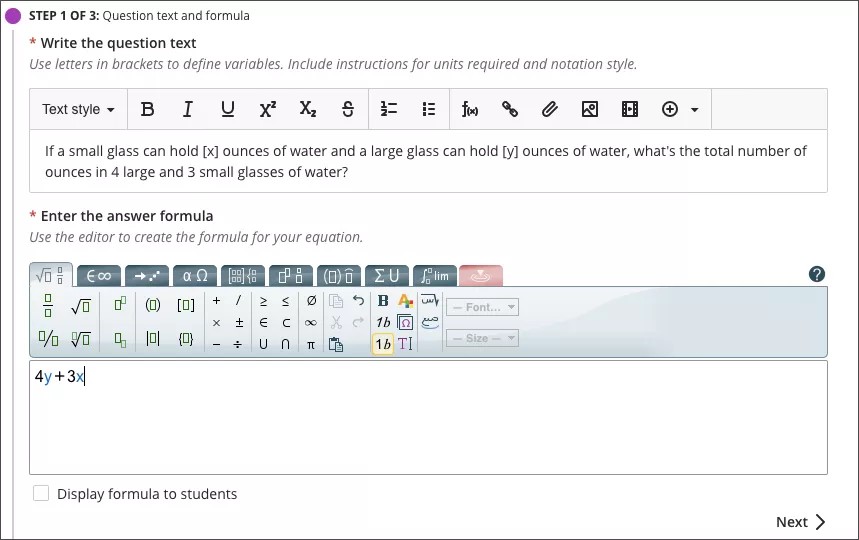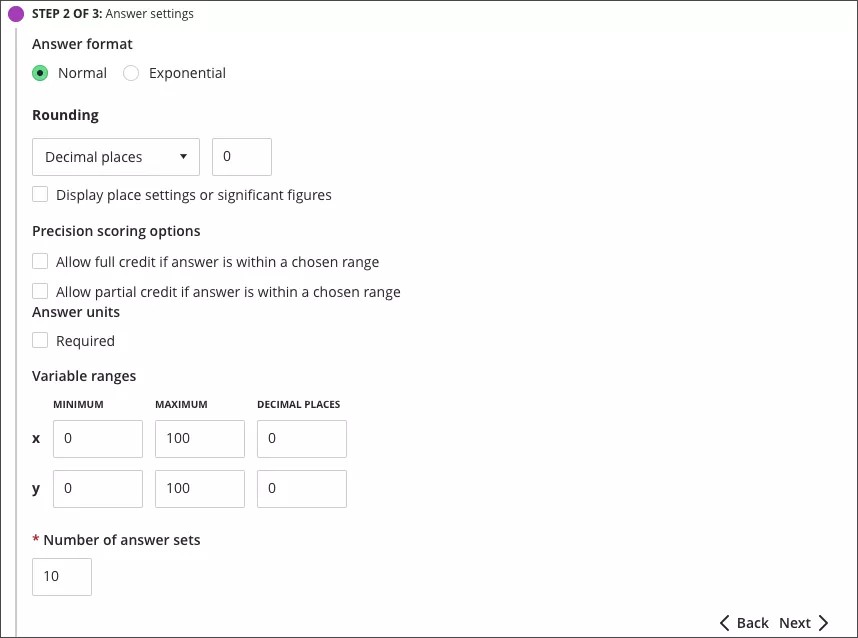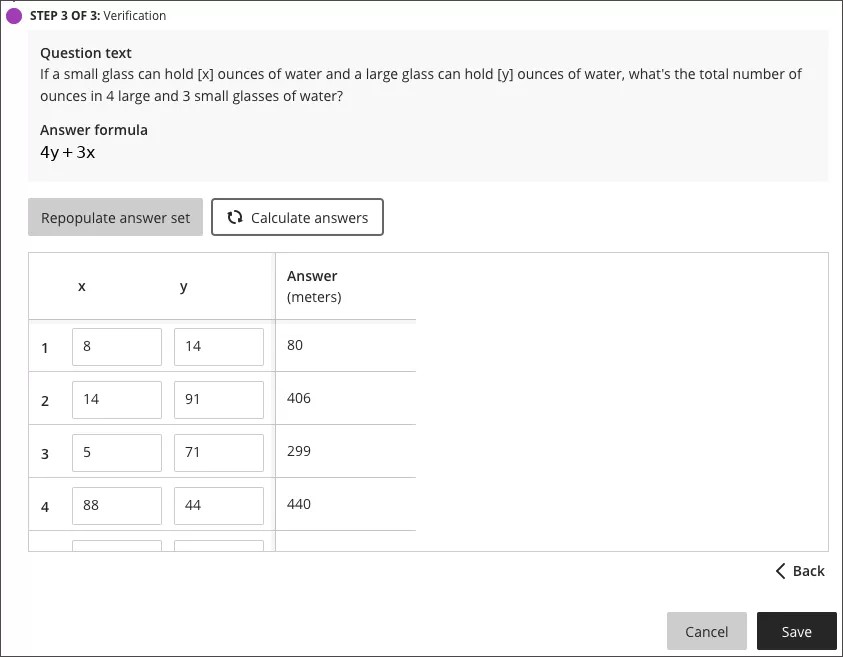About calculated formula questions
Calculated Formula questions present students with a question that requires them to make a calculation and respond with a numeric answer. The numbers in the question change with each student and are pulled from a range that you set. The correct answer is a specific value or a range of values.
In the example, the numbers 87 and 19 are randomly generated from a range of values set by an instructor.
An instructor creates this question:
If a small glass can hold [x] ounces of water, and a large glass can hold [y] ounces of water, what's the total number of ounces in 4 large and 3 small glasses of water?
When a student views the question, the variables [x] and [y] are replaced with values that are generated randomly from number ranges that the instructor specifies.
Create calculated formula questions
When you create a new test, select the plus sign to open the menu. In an existing test, select the plus sign wherever you want to add a question. Select Add Calculated Formula question.
You'll use the same process when you create questions in tests and assignments.
The Test Content area opens where you create the question and add the formula. Questions have a default value of 10 points.
Formulas will render as SVG files for improved quality
- The Question Text may contain variables or basic equations. Surround variables with square brackets. Variables are replaced by values when shown to students.
Variables must consist of letters, and you can't reuse variable names. Variables can contain more than one character, such as [ab] or [cd].
'sin', 'cos', 'tan', 'asin', 'acos', 'atan', 'csc', 'sec', 'cot', 'log', 'In', 'round', 'e', and 'pi' are considered reserved variables and therefore can't be used.
- The Answer Formula is the mathematical expression used to find the correct answer. Choose operators from the functions across the top of the Answer Formula box. In the example, the formula is 4y+3x.
Choose if you want to Display formula to students.
- Select Next to proceed.
Define the answer settings for calculated questions
Add a calculated formula question, complete the first page, and select next. Use the next step in the process to define the question's settings, scoring options, and answer sets.
- Set your Answer format and Rounding settings.
- In Precision scoring options, select your scoring options.
Allow full credit if answer is within a chosen range: The range of answers that are awarded full credit. Select whether it is a Number or a Percentage. If the answer must be exact, type zero for the range.
Allow partial credit if answer is within a chosen range: Allow partial credit on a less accurate range of answers. Set the Credit to award if the student's answer is within the partial credit range.
- Choose your Answer units setting. If required, the unit of measurement must be included in the student's answer. Type the Answer Units and Units Points Percentage to be awarded if the units are entered correctly.
Answer units must be an exact match. For example, if you type "meters" for the unit, "m" will be considered incorrect.
- In the Variable ranges section, provide the Minimum Value and Maximum Value for each variable. When the question is presented to a student, the system replaces the variable with a value that is randomly selected from the range you defined. You can use scientific notation in the value boxes. Select the number of Decimal Places for each variable's value.
The number of decimal places you select can affect the minimum and maximum values of a variable. For example, you set the minimum value as 0.0000004 and the maximum value as 1, and you choose 2 decimal places. The system rounds both numbers to 2 decimal places, therefore the system generates variables in the answer sets with values between 0.00 and 1.00.
- Type a Number of answer sets to generate.
- Select Next to view the answer sets. You can edit the answer sets on the next page. Select Back to go to the previous page, or Cancel to quit.
Verify the answer sets
The last step in the process displays the answer sets that were generated by the system. Each set represents one of the possible variations of the question that can be presented to students.
- You can change the values of the variables in each answer set by typing in the boxes. Select Calculate answers to update the calculated answers and save your changes before you submit.
- Select Repopulate answer set to delete it and have the system automatically replace it with another set. If you want to reduce the number of sets, select Back and change the number of answer sets in Answer Settings.
- Select Save to add the question to the test.





